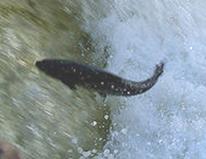 By Western Regional Aquaculture Center,
By Western Regional Aquaculture Center,
FORT COLLINS – A recently completed study by researchers at Colorado State University showed that angler spending supported by the Aquacultural Suppliers of Recreational Fish ( ASRF ) in the Western region of the United States contribute about $1.9 billion in output and more than 26,000 jobs to the economy of the states in the region. The Western region includes Colorado, New Mexico, Arizona, Utah, Nevada, California, Washington, Oregon, Idaho, Montana and Wyoming.
Results showed that every dollar of recreational fish sales can be traced to $36 of economic activity, and every $1 million spent on ASRF products is associated with nearly 500 jobs in the Western region. Locally, this implies that production from Colorado recreational fish producers results in an estimated total economic contribution of more than a quarter-billion dollars and about 3,500 jobs.
The research team collected data from 173 private businesses that raise fish for recreational stocking, as well as a sample of their first point-of-sale customers ( fishing clubs, dude ranches, etc. ) and anglers. Spending information from these three groups was used with a regional economic model that allowed researchers to trace the economic activity associated with the proportion of recreational angling directly supported by the ASRF industry. The study showed the biggest impacts come from supporting recreational angling in freshwater streams, rivers and lakes across the West.
“The difficult part of the analysis was estimating forward linkages from the suppliers of recreational fish to the anglers,” said Craig Bond, resource economist in the Department of Agricultural and Resource Economics at Colorado State and principal investigator on the project. “We asked the first point-of-sale customers to estimate the share of their revenue directly related to private fish stocking and used this data in conjunction with the angler survey to estimate spending impacts.”
ASRF producers account for $53 million in direct sales in the Western region. However, when accounting for the forward linkages of the industry – expenditures resulting from the use of ASRF products – the numbers grow dramatically. For example, anglers in Colorado spend, on average, $135 to $138 per angler day, a figure that rises to $179 per angler day in California. Combined with an estimated 7 million ASRF-supported angler days in the Western United States per year using the survey data, this results in about $1 billion in annual expenditures from anglers directly attributable to aquacultural stocking activity done by private businesses. Accounting for “ripple effects,” or the downstream effects of angler expenditures on other industries such as hotels, gasoline stations and grocery stores as well as those industries’ suppliers, the total effect is just under $2 billion in total economic activity.
“Many people are likely aware of the production of fish for food,” Bond said, “but less well known is the contribution made by private aquacultural producers in the West to the recreational fishing opportunities so prized by residents and visitors to the region. Those producers have a significant economic presence in the Western region.”
For more information about the study, visit http://dare.colostate.edu/tools/aquaculture.aspx.
The Economic Contributions of the Aquacultural Suppliers of Recreational Fish ( ASRF ) study was sponsored by the Western Regional Aquaculture Center ( WRAC ), whose mission is to support aquaculture research, development, demonstration and education to enhance viable and profitable U.S. aquaculture production for the benefit of consumers, producers, service industries and the American economy.
Disclaimer: Articles featured on Oregon Report are the creation, responsibility and opinion of the authoring individual or organization which is featured at the top of every article.

